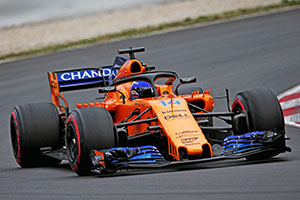shared on autosport, nice article on amus wth qoutes from stella and morris
https://www.auto-motor-und-sport.de/for ... en-schief/
recap
Big wake upcall came in bahrain, something did not work as expected on the car according to stella
then came spain and monaco which was reasonable. We knew that there where things on the car we didnt quit understand but we thought we could solve. In montreal reality hit, finally we became aware we had a real problem and from then on development was put on hold.
Further stella says. our 2017 car was a good platform, we wanted to develop on from that. In 2017 though we lost masively to rb in some corners and we wanted to solve that with the 18 model. Unfortunately we brought over the problem. In hinsight we went to far in certain areas which contributed to some aerodynamic problems, and we got ourself into a deadend situation
Amus: the mcl was not able to keep constant/stabile df through the whole corner. To counter that and get more stability they ran more wing which contributed to the lower top speeds
Amus: mclaren was not the only team having trouble keeping constant df. Stella explains its due to the wider cars, and says the biggest challenge of the aerodynamic team is to control front wheel wake since the frontwheels are now bigger hence producing more turbulence. This is even more critical due to the wider floor. The floor today is responsible for a higher % of overall df then before. And that according to stella is the secret of the top teams. Who manages to keep stabile df all through a corner is in another league.
Then he mentions they reached the borders of what can be simulated with cfd and windtunnel. From austrian gp and forwards fp1 was dedicated to testing, and according to simon roberts every single stone was turned to find out where the mistake was hidden
Stella: in fast corners our car was not that bad. Our deficit was mainly in slow corners. And that part is extremly difficult to simulate with cfd and windtunnel.
Amus: as soon the engineers realized the car was traped in its own concept, they did everything to understand why. Stella mentions that often its not one detail/component but the result of components combined. To get a better overall understanding they changed/updated their testing procedures
Simon roberts: is confident all problems has been identified. It was a long process, not something that happened one day to the other.We could have introduced soultions to the current car but that would have added weight. That why the development was slow during the sec half of the year. Stella adds. Its not as if we lacked ideas.The concept just had its limitations and many of the changes would not have had an impact.
lastly stella mentions that always when a car is difficult, its where alonso excel. Last year stoffel was closer but with the difficult car this year with unstable rear df, stoffel suffered more

